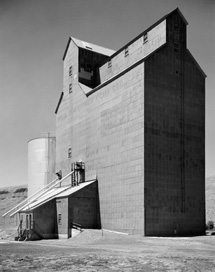The Microtek ScanMaker i900
Professional Flat-Bed Scanner Features At A Consumer Price Page 2
After satisfying myself of good black and white 120 film scanning performance
I moved on to color 120 film images. With color I was equally impressed, but
for a very different reason. The Microtek ScanMaker i900 sensor apparently has
an advantage in its response to color image information by pulling up and recording
more of what is available in the film image. This enhanced color sensitivity
actually makes any color correction and adjustment, like removing a color cast,
easier and more effective with SilverFast.
Moving on next to scanning color slides, the SnapTrans holder is a really distinct
advantage because it holds 12 slides, all of which are easily loaded and then
removed after scanning. Even compared to dedicated 35mm scanners, the i900 reduces
the physical effort involved in loading and removing slides, reducing the frequency
of the task to a third and making the entire scanning task noticeably more efficient.
I also obtained the same color response advantage I experienced making 120 scans
with 35mm scans. All of the above made the entire film scanning capability a
positive one, establishing for me the value and versatility of this new Microtek
scanner.
In addition, I should not forget reflective or print scanning. The unit has
an advantage with a 3" longer scan surface compared to most other flat-beds
in the consumer scanner field. With both color and black and white prints, the
print scanning experience was as easy and quick and produced as fine a quality
results as with film.
 |
|
|
Evaluation And Conclusions
The Microtek ScanMaker i900 offers users an unusual combination of hardware
features in a dual purpose (print and film) flat-bed scanner, including their
EDIT glassless film scanning with convenient and efficient to use SnapTrans
film holders, which support scanning all standard film sizes. The scanner also
has very high operating specifications such as 6400x3200 optical resolution,
4.2 D-max, and 48-bit depth A/D conversion. Additionally, Digital ICE Photo
Print Technology, as well as a very complete and generous software bundle at
an estimated street price of $599, makes it an exceptional value.
But this positive experience begs the question: is it comparable to a more expensive
scanner of the same type, like Microtek's own ArtixScan 1800f I reviewed
last year? My experience is that it is close, but does not match the higher-priced
scanner in all respects. For example, even though the resolution specs of the
1800f are lower, the i900 does require more software image sharpening, especially
when the original size becomes smaller, and does not capture as much fine detail.
This is due to the i900's six-line CCD compared to the three-line CCD
of more expensive professional scanners. To some extent this one shortcoming
can be overcome by careful software sharpening that is done in stages using
different sharpening tools. This should avoid creating artifacts that are common
to using too strong a setting with Unsharp Mask sharpening.
 |
|
|
My recommendation is that if your scan needs include scanning prints and a variety of large- and medium-sized film, and your budget is limited, you cannot do better than the Microtek ScanMaker i900. If the only film you have to scan is 35mm, you are best served by getting a dedicated 35mm scanner, like the Microtek ArtixScan 4000tf, which is now selling for close to the same price as the i900.
Technical Specifications
Bit Depth/Optical Density: True 48-bit color/4.2 max. optical
density
Optical Resolution: 6400x3200dpi
Max. Interpolated Resolution: 25,600x25,600
Scan Area: 8.5x14" Reflective; 8x10" Film/Transparencies
Interface Type: FireWire and Hi-Speed USB
Platforms: Windows and Macintosh
Included Software: LaserSoft Imaging's SilverFast Ai
6 (PC/Mac); Adobe's Photoshop Elements 2.0 (PC/Mac); Adobe's Photoshop
Album SE version (PC); Microtek's ScanWizard Pro (PC/Mac); Microtek's
Scan, Copy, Email, OCR, Scan-to-Web utilities (PC/Mac); Microtek's LANShare:
LAN scanner sharing utility (PC); ABBYY's FineReader Sprint OCR (PC/Mac);
Kodak's Digital Science Color Management (PC/Mac); Ulead's Photo
Explorer (PC/Mac); Adobe's Acrobat Reader (PC/Mac)
Included Hardware: FireWire and Hi-Speed USB cables; power
adapter
Included Accessories: SnapTrans film holders: 35mm slides (for
12 slides), 35mm filmstrips (for 12 frames), 4x5" (for two); medium format
(for four), and additional glass tray for scanning film transparencies up to
8x10"; Kodak reflective and transmissive IT-8 targets
Optional Accessory: Additional SnapTrans film holders
Image Sensor: 24,480-element Sigma Six CCD
Scanner Weight: 24.7 lbs
Scanner Dimensions: 23.6x15.2x6.3"
Estimated Street Price: $599
For more information, visit Microtek's website at: www.microtekusa.com.
- Log in or register to post comments

































